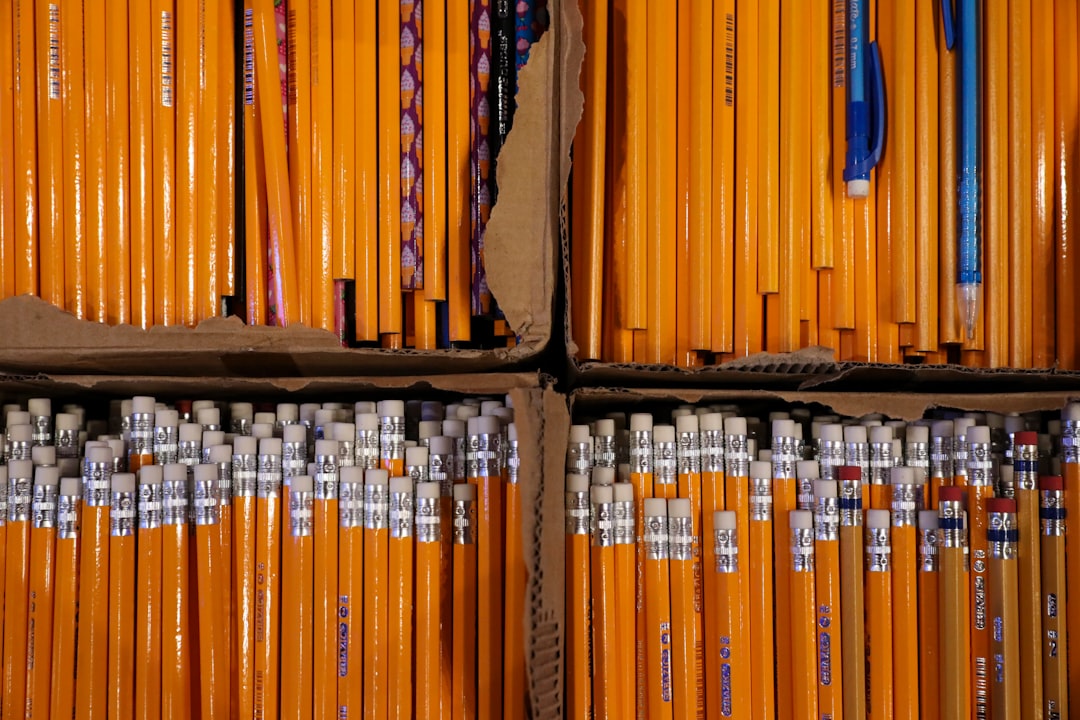

Engage prospects with a scan and streamline customer engagement with FREE QR code marketing tools by Sona – no strings attached!
Create a Free QR CodeFree consultation

No commitment

Engage prospects with a scan and streamline customer engagement with FREE QR code marketing tools by Sona – no strings attached!
Create a Free QR CodeFree consultation

No commitment
Correspondence schools have played a critical role in shaping the landscape of distance learning and online education, bridging the gap for students who require flexibility and access to quality instruction beyond traditional classroom settings. Historically reliant on paper-based assignments and postal mail, these institutions are now well into a digital transformation that unlocks new opportunities for student engagement, program feedback, and streamlined administration, as covered in Sona QR’s education guide.
A persistent frustration for correspondence schools is the difficulty in establishing high-quality, timely feedback channels with a geographically dispersed and diverse student body. When feedback depends on manual paper surveys or mailed forms, valuable student insights often go unrecorded or are delayed to the point of irrelevance. As a result, institutions struggle to rapidly identify student needs, adapt course materials, or address dissatisfaction before it leads to disengagement or attrition.
Increasingly, correspondence schools are turning to accessible, non-invasive tools like QR codes to bridge offline coursework with real-time, actionable analytics. Embedding dynamic QR codes into course packets, mailers, or digital communications transforms every touchpoint into a chance to gather feedback, surface student needs, and streamline compliance documentation. This practical approach addresses missed engagement signals and administrative bottlenecks, empowering institutions to accelerate enhancements and support, and ultimately cultivate a more responsive, student-centric experience. See Sona QR’s product overview for how dynamic codes, analytics, and integrations work together.

Correspondence schools often face a frustrating gap between what students experience and what institutions can measure. Paper forms get misplaced, surveys arrive late, and mailed envelopes do not encourage immediate action. QR codes eliminate much of this friction by turning any physical asset into a direct pathway to a digital form, micro-survey, or support request that students can complete in minutes, a point reinforced in QR marketing strategies.
To get started, map your top feedback needs to specific points in the student journey. Identify what you want to learn at orientation, early in the term, after assessments, and at completion. Then place QR codes where students already engage: on the cover of course packets, beside major assignment instructions, and in progress letters. QR codes can carry students to purpose-built forms that are short, mobile friendly, and tied to a clear call to action.
As you build momentum, set a cadence. For example, include a QR code in every new mailer and at least two within each course module. Keep the experience consistent so students know what to expect and why their feedback matters. Over time, you will reduce the lag between issues arising and action being taken.

Correspondence schools often rely on static print that does not generate data. Once a packet ships, institutions cannot see whether students engage or where they struggle. QR codes bridge this gap by making every mailer measurable and actionable. Students no longer have to remember URLs or wait until they can access a desktop; they can scan with a mobile device and respond in seconds. See college student QR use for campus-specific adoption patterns.
The value extends beyond convenience. Dynamic QR codes allow schools to update destinations as needs change, route feedback based on context, and view analytics across programs and cohorts. Instead of quarterly pulse checks, teams can monitor engagement continuously and prioritize interventions quickly.
For correspondence schools that serve nontraditional learners, the combination of lower friction and higher insight is especially valuable. Students juggling work, family, or military service will engage more when the path is obvious and short. QR codes help ensure their feedback is easy to give and quick to act on.

Not every QR code needs to send students to the same place. Formats should match your goals and the context of the scan. For feedback and student support, a handful of formats cover most needs, and all can be managed centrally with a dynamic QR platform.
Adopt dynamic codes whenever possible. Static codes lock you into a fixed destination, while dynamic codes let you update links, A/B test experiences, and tag each scan for attribution. For correspondence schools with long-lived materials, dynamic flexibility protects against waste and keeps content current throughout a term.

Growth opportunities hide in the moments when students are already paying attention. In correspondence learning, those moments are not in a campus hallway; they are in the course packet on a kitchen table, an orientation letter via direct mail, or the progress report that arrives at midterm. Use QR codes to turn those moments into measurable engagement.
Focus on placements that align with the student journey. Early placements can surface onboarding confusion, midterm placements can surface unmet support needs, and completion placements can capture outcomes or testimonials. Each QR code becomes a signal about what matters most and where the program can improve.
Schools that consistently place QR codes at high-attention points uncover patterns quickly: modules that trigger confusion, assignments that take too long, or support gaps that recur. These insights fuel targeted follow-ups, refined content, and better outcomes, even for students who rarely initiate contact on their own.

QR codes are most effective when paired with specific, measurable use cases. Start with a handful that map to priority outcomes: increased feedback participation, improved support responsiveness, and better student retention. Then expand as you learn what works.
Each use case creates a digital breadcrumb trail. When linked to your CRM or student information system, it becomes possible to map the feedback journey from first scan to resolution and to attribute improvements in retention or satisfaction to specific interventions.
Every scan carries context: where it happened, when it happened, and which call to action inspired it. By assigning unique codes to different touchpoints, correspondence schools can organize these signals into actionable audience segments. This turns passive print into an active funnel for student success and growth. For tactics, see intent-driven retargeting.
Begin by distinguishing between prospective students, current learners, and alumni. Then create subsegments based on intent, such as help seekers, course enthusiasts, or event interested. When a student scans a help code during week three of a course, that context can trigger targeted tutoring resources. When an alumnus scans a story submission code, it can trigger a request for a testimonial and a referral prompt.
This approach replaces assumptions with data. Rather than blasting the same message to all students, you can deliver timely, relevant communications that solve specific problems, increase participation, and reduce churn.
Disjointed campaigns lead to inconsistent messaging and missed opportunities. QR codes help unify outreach by making every channel measurable and connected. When print, email, events, and even video all share QR entry points tied to the same analytics hub, you can see the whole picture and adjust in near real time. See ideas for educational institutes.
Create a simple integration plan. For every high-visibility asset, add a QR code with a clear call to action and ensure the destination is built for mobile. Use consistent visual frames around your codes and keep calls to action short. In reporting, group scans by channel so you can spot which placements drive the most engagement and where to optimize.
A centralized QR platform allows you to manage all codes, destinations, and analytics in one place. Integrations with your CRM and learning systems ensure that scan activity becomes part of a student’s holistic record, not a siloed datapoint.
Start by defining a single, clear objective. For example, boost completion rates for midterm course evaluations, a frequent point of missed feedback in correspondence models. Clarify what success looks like, such as increasing response rates from 18 percent to 45 percent within two terms, or reducing the time from survey launch to actionable insights from four weeks to one week.
Select one course or cohort as a pilot to learn quickly. Map where and when students will encounter the QR code and what message they will see. Keep the journey short: scan, two to five questions, submission, and a confirmation message that sets expectations for how the feedback will be used.
Choose dynamic QR codes for any campaign that requires tracking, editing, or optimization. Dynamic codes allow you to change the destination if your form provider changes, add UTM tags for attribution, and integrate scan data with your CRM. They also enable A/B testing of different calls to action or landing pages without reprinting.
Static QR codes are suitable for fixed destinations such as a permanent orientation video or a PDF handbook. For feedback collection and campaigns you plan to iterate, dynamic is the safer, more scalable choice that protects your print investment. Start creating QR codes for free.
Design your QR for scannability first. Use high contrast between the code and background, include a quiet zone around the code, and avoid placing it near folds or glossy surfaces that produce glare. Add a short, benefit-driven call to action beneath the code such as Scan to submit feedback in 60 seconds or Scan to request tutoring support.
Test in real contexts. Print samples at the sizes you plan to use and scan them with multiple devices and camera apps in different lighting conditions. Verify that the destination loads quickly on mobile, the form is short and accessible, and completion requires minimal taps. A final checklist reduces avoidable friction that can depress response rates.
Roll out your campaign in the next round of course shipments, orientation packets, progress letters, and event mailers. Match placement to student attention: front covers, assignment pages, and summary sheets perform better than back pages or footers. Reinforce the same call to action across email and SMS reminders so students recognize the QR code and know what to expect.
Stagger deployment across cohorts to measure results and refine as you go. Maintain a central log of where each code appears so you can attribute scans to specific assets and messages. This operational discipline pays off when you analyze performance and decide where to scale.
Review scan rates, form completions, and submission timing weekly during the initial rollout. Look for patterns by cohort, region, or device. If scans are high but completions are low, simplify the form or improve the confirmation message. If scans are low, adjust placement, increase the size, or strengthen the call to action.
Close the loop with students. Send thank-you messages, share a short summary of what you learned, and outline the actions you will take. This builds trust and increases the likelihood of future participation. Over time, test variations in wording, placement, and incentives to continuously improve performance.
Without robust tracking, it is hard to know which placements work, which messages resonate, or which students need attention. The promise of QR codes is not just convenience; it is measurable, real-time insight that teams can act on. With the right analytics, you can see how scans translate into form submissions, support resolutions, retention gains, and ultimately revenue outcomes.
Start with a clear data model. Tag each QR code with the campaign, channel, cohort, and intended outcome. Track scan counts, unique scanners, completion rates, and time to completion. Connect these signals to your CRM or student systems so you can view engagement in context alongside grades, attendance, or payment status. This unifies offline-to-online signals into a single student journey.
Platforms such as Sona QR and Sona help close the attribution loop. Sona QR captures detailed scan data by time, device, location, and source, and syncs it to your CRM. Sona, an AI-powered marketing platform for identity and attribution, connects those engagements to downstream outcomes through identity resolution and multi-touch attribution, helping you see how QR-driven interactions contribute to pipeline, enrollment, and alumni giving. This elevates QR codes from convenient links to a core part of your performance and student success strategy.
As you scale QR code usage, focus on consistency, attribution, and automation. Small operational improvements can produce outsized gains in participation and insight. Use unique codes for major assets, standardize calls to action, and make every scan trigger a helpful next step.
Creative placements can also unlock new value. Consider QR codes on graduation programs to collect alumni testimonials, or on exam covers to provide an anonymous channel for reporting unclear instructions. The goal is to make it easy for students to communicate at the exact moment their feedback is most useful.
With the right foundation, you can expand from a single use case to a comprehensive feedback and engagement system that respects student time and delivers continual improvement for your programs.
For correspondence schools, the biggest barrier to better outcomes is not a lack of insight or effort; it is the lag between offline learning and online action. QR codes close that gap. By embedding dynamic, well-designed codes into existing workflows, institutions can capture timely feedback, resolve issues faster, and build a continuous conversation with students and alumni.
The payoff is practical and strategic. Students experience support when they need it, faculty receive fresher input to improve instruction, and administrators gain the analytics required for accreditation, reporting, and growth planning. With a platform like Sona QR to manage codes and analytics, and Sona.com to connect scans to measurable outcomes, every piece of correspondence can become a live connection point. The result is a more responsive, data-informed program that meets modern expectations for convenience and transparency while preserving the flexibility that defines correspondence education.
QR codes have transformed correspondence schools from traditional, one-way communication channels into dynamic, interactive feedback tools. Whether it’s gathering student insights, improving course materials, or enhancing learner engagement, QR codes replace outdated feedback methods with instant, mobile-friendly actions that capture real-time data to drive continuous improvement.
Imagine instantly knowing which lessons resonate most with students and receiving their feedback right when it matters. With Sona QR, you can create dynamic, trackable QR codes in seconds, update surveys without reprinting materials, and connect every scan directly to actionable insights. No more guessing—just smarter, more responsive correspondence education.
Start for free with Sona QR today and turn every scan into valuable feedback that elevates your school’s impact and student success.
Correspondence schools deliver education through distance learning by providing course materials via mail or digital means, allowing students to study flexibly outside traditional classrooms.
Correspondence schools offer flexibility, accessibility for geographically dispersed students, and the ability to balance education with work or family commitments.
QR codes connect physical course materials to digital surveys, feedback forms, and support resources, enabling real-time student engagement, faster feedback collection, and streamlined administrative processes.
Successful uses include embedding QR codes in course packets for feedback, event RSVPs, tutoring requests, alumni surveys, and referral programs, all improving response rates and support responsiveness.
Technology integration with dynamic QR codes enables continuous monitoring of student engagement, faster intervention, improved data collection, cost efficiency, and better alignment of support services.
Common formats include web links to surveys, interactive forms for requests, app downloads, vCards for contact info, and SMS or email templates for quick support communication.
Schools should map feedback needs to student journey points, place QR codes on high-attention materials with clear calls to action, use dynamic codes for flexibility, and maintain consistent deployment.
Analytics track scan rates, completion, and engagement patterns to identify high-performing assets, address barriers, link feedback to outcomes, and automate targeted follow-ups.
By assigning unique QR codes to different touchpoints, schools can segment students by status and intent, sync scan data with CRM systems, and deliver personalized messages that improve participation and retention.
Key steps include choosing a clear objective, selecting dynamic QR codes, designing and testing for scannability, deploying across high-impact channels, and tracking performance to optimize results.
Use Sona QR's trackable codes to improve customer acquisition and engagement today.
Create Your FREE Trackable QR Code in SecondsJoin results-focused teams combining Sona Platform automation with advanced Google Ads strategies to scale lead generation

Connect your existing CRM

Free Account Enrichment

No setup fees
No commitment required

Free consultation

Get a custom Google Ads roadmap for your business






Launch campaigns that generate qualified leads in 30 days or less.
